
Stenocactus vaupelianus f. cristatus Photo by: Valentino Vallicelli
Origin and Habitat: Garden origin ( produced cultivar)
Synonyms:
See all synonyms of Stenocactus vaupelianus
Description: It has a woolly, spiny apex; the ribs are slender deeply notched wavy and corrugated; Areoles are at first covered with white felt. The beautiful crested form is very rare in collection and highly priced.
Spines: Centrals 1 or 2 (to 4), growing one above the other, which of variable length up to7 cm. long. They are sharp and needlelike, sometimes flattened, pointing upward at first and then outward, brownish-black at their apex and somewhat reddish lower down. Radials (10 to) 15 to 25 slender, almost transparent white, 1-1.5 cm long straight or slightly curved, and radially arranged, overlapping each other above the ribs.
Flowers: The flowers are 2 (2,5) cm. long, often remain squeezed between the apical spines, and have pale yellow, creamy-white or pink segments with a darker mid-stripe.
Subspecies, varieties, forms and cultivars of plants belonging to the Stenocactus vaupelianus group
Bibliography: Major references and further lectures
1) Edward Anderson “The Cactus family” Timber Press, Incorporated, 2001
2) Nathaniel Lord Britton, Joseph Nelson Rose “Cactaceae: Descriptions and Illustrations of Plants of the Cactus Family” vol. 4 The Carnegie Institution of Washington, Washington 1923
3) James Cullen, Sabina G. Knees, H. Suzanne Cubey "The European Garden Flora Flowering Plants: A Manual for the Identification of Plants Cultivated in Europe, Both Out-of-Doors and Under Glass" Cambridge University Press, 11/Aug/2011
4) David R Hunt; Nigel P Taylor; Graham Charles; International Cactaceae Systematics Group. "The New Cactus Lexicon" dh books, 2006
5) Hecht, Hans “BLV-Handbuch der Kakteen.” München ; Wien ; Zürich : BLV-Verl.-Ges. 1982
6) Guadalupe Martínez, J., Sánchez , E., Bárcenas Luna, R. & Gómez-Hinostrosa, C. 2013. Stenocactus vaupelianus. In: IUCN 2013. "IUCN Red List of Threatened Species." Version 2013.2. <www.iucnredlist.org>. Downloaded on 07 January 2014.
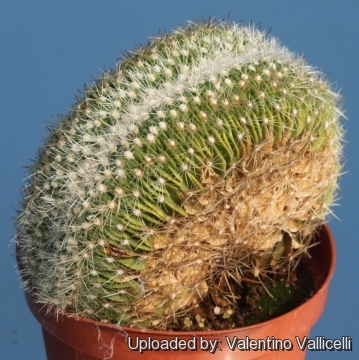 Stenocactus vaupelianus f. cristatus Photo by: Valentino Vallicelli
Stenocactus vaupelianus f. cristatus Photo by: Valentino Vallicelli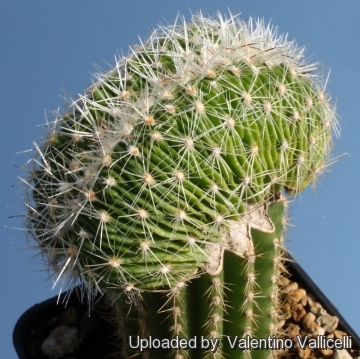 Stenocactus vaupelianus f. cristatus Photo by: Valentino Vallicelli
Stenocactus vaupelianus f. cristatus Photo by: Valentino Vallicelli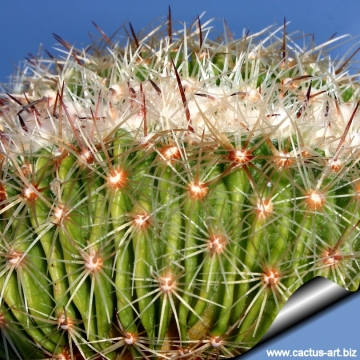 Stenocactus vaupelianus f. cristatus Photo by: Cactus Art
Stenocactus vaupelianus f. cristatus Photo by: Cactus Art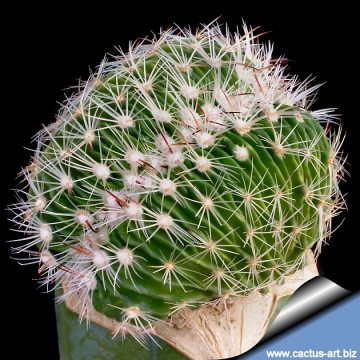 Stenocactus vaupelianus f. cristatus Photo by: Cactus Art
Stenocactus vaupelianus f. cristatus Photo by: Cactus Art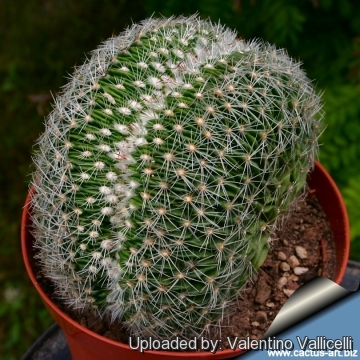 Stenocactus vaupelianus f. cristatus Photo by: Valentino Vallicelli
Stenocactus vaupelianus f. cristatus Photo by: Valentino Vallicelli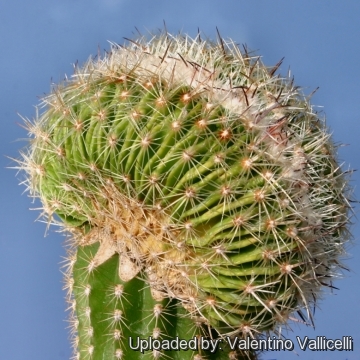 Stenocactus vaupelianus f. cristatus Photo by: Valentino Vallicelli
Stenocactus vaupelianus f. cristatus Photo by: Valentino Vallicelli Stenocactus vaupelianus f. cristatus Photo by: Cactus Art
Stenocactus vaupelianus f. cristatus Photo by: Cactus Art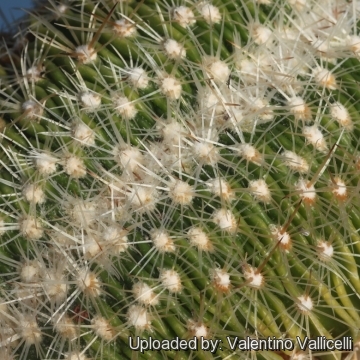 Stenocactus vaupelianus f. cristatus Photo by: Valentino Vallicelli
Stenocactus vaupelianus f. cristatus Photo by: Valentino VallicelliCultivation and Propagation: It is a fairly easy plant to grow both grafted or in its own roots. During the summer it is best to keep the plants outside where the temperature can rise to over 30 C with no harm to the plant. Furnish good drainage and use a an open and free draining mineral compost that allows therefore roots to breath. They like only a short winter's rest and should be kept almost completely dry during the winter months, If the soil is allowed to be dry for too long root loss could follow but equally the same result would occur if the plants are both wet and cold. From March onwards the plant will begin to grow and watering should be increased gradually until late May when the plant should be in full growth.
Water regularly during the summer so long as the plant pot is allowed to drain and not sit in a tray of water. During hot weather you may need to water the plants more frequently so long as the plant is actively growing. From late September watering should be reduced to force the plant to go in to a state of semi dormancy, by October you should be back in to the winter watering regime.
Need full sun avoiding only the harshest summer sun, if kept too dark they may become overly lush and greener and could be prone to rotting due to over watering.
Feeding may not be necessary at all if the compost is fresh then, feed in summer only if the plant hasn't been repotted recently. Do not feed the plants from September onwards as this can cause lush growth which can be fatal during the darker cold months.
Propagation: By vegetative propagation grafting or stem cuttings from adult plants.
Your Photos

by Valentino Vallicelli

by Valentino Vallicelli

by Cactus Art





















